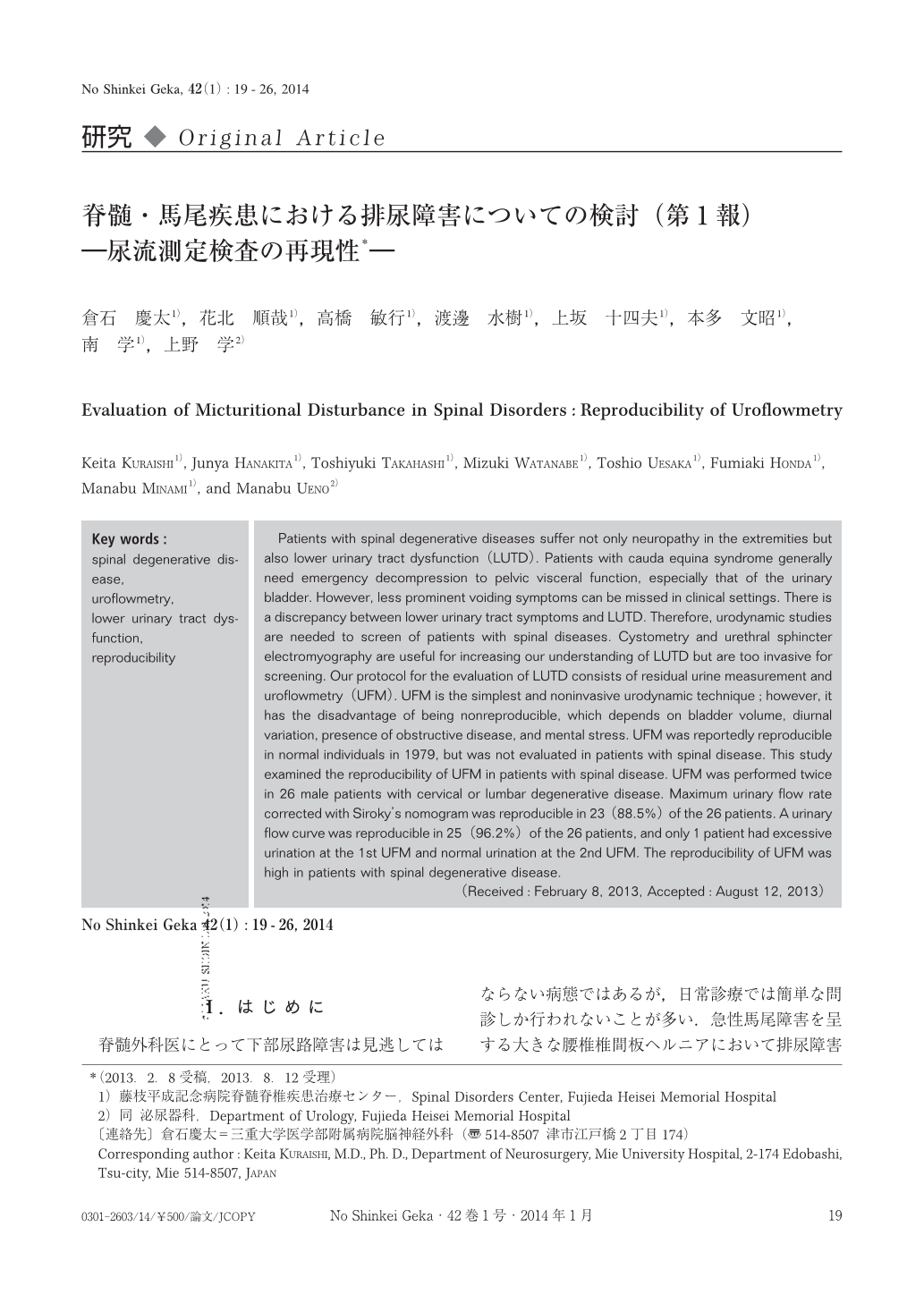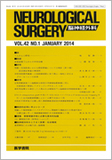Japanese
English
- 有料閲覧
- Abstract 文献概要
- 1ページ目 Look Inside
- 参考文献 Reference
Ⅰ.はじめに
脊髄外科医にとって下部尿路障害は見逃してはならない病態ではあるが,日常診療では簡単な問診しか行われないことが多い.急性馬尾障害を呈する大きな腰椎椎間板ヘルニアにおいて排尿障害を認めることはよく知られているが6,9,10),緩徐進行型の腰部脊柱管狭窄症や頚椎疾患では膀胱直腸障害としてどのような病態を示すのかについては未だ不明な点が多い18).現在までに脊椎脊髄,馬尾疾患に対して膀胱内圧測定や尿道括約筋筋電図を用いた検討は報告されており2,4,5,12,14,16),さまざまな病態が明らかになりつつあるが,これらはスクリーニングとして行うには侵襲的である.われわれは脊椎脊髄疾患の術前後の排尿スクリーニングとして残尿測定に加えて尿流測定検査(uroflowmetry:UFM)を施行している.UFMは排尿機能の動的な状態を客観的に評価できる有用な検査である.泌尿器科ではさまざまな病態の確定診断としてではなく,膀胱内圧測定や尿道括約筋筋電図などの侵襲的検査を行う前段階として行われることが多い11).大きな利点は侵襲の少なさである.現在までに脊椎脊髄疾患症例におけるUFMの報告は少ない7,17).理由として立位で疼痛を伴うことが多い脊椎脊髄疾患症例において再現性が乏しいのではないかということが考えられる4).今回,脊椎脊髄疾患症例の排尿スクリーニングにUFMが有効かどうかを検証するために,脊椎脊髄疾患症例におけるUFMの再現性を最大尿流率,曲線形を用いて評価した.
Patients with spinal degenerative diseases suffer not only neuropathy in the extremities but also lower urinary tract dysfunction(LUTD). Patients with cauda equina syndrome generally need emergency decompression to pelvic visceral function, especially that of the urinary bladder. However, less prominent voiding symptoms can be missed in clinical settings. There is a discrepancy between lower urinary tract symptoms and LUTD. Therefore, urodynamic studies are needed to screen of patients with spinal diseases. Cystometry and urethral sphincter electromyography are useful for increasing our understanding of LUTD but are too invasive for screening. Our protocol for the evaluation of LUTD consists of residual urine measurement and uroflowmetry(UFM). UFM is the simplest and noninvasive urodynamic technique;however, it has the disadvantage of being nonreproducible, which depends on bladder volume, diurnal variation, presence of obstructive disease, and mental stress. UFM was reportedly reproducible in normal individuals in 1979, but was not evaluated in patients with spinal disease. This study examined the reproducibility of UFM in patients with spinal disease. UFM was performed twice in 26 male patients with cervical or lumbar degenerative disease. Maximum urinary flow rate corrected with Siroky's nomogram was reproducible in 23(88.5%)of the 26 patients. A urinary flow curve was reproducible in 25(96.2%)of the 26 patients, and only 1 patient had excessive urination at the 1st UFM and normal urination at the 2nd UFM. The reproducibility of UFM was high in patients with spinal degenerative disease.

Copyright © 2014, Igaku-Shoin Ltd. All rights reserved.


